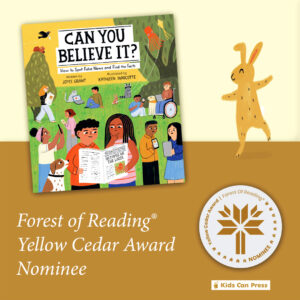I was talking to a mom today about a child who is having some trouble with reading comprehension. In other words, he reads a paragraph and has trouble understanding and summarizing what he’s just read.
He also isn’t reading a lot—possibly he doesn’t enjoy reading because of his difficulties with comprehension.
There are lots of fun activities to help with that and here are a few that I suggested.
1) Take a newspaper and turn to an interesting story. Reading just the headline and looking at the pictures, ask him what he thinks the news story will be about. If he’s having trouble, get him to identify and circle the verbs in the headline and/or the nouns. Use those key words as “hints” as to what the article will be about.
Make sure you pick a headline that’s not too convoluted, and that’s about something interesting for him. If he likes sports, turn to a sports story. (Our sister website, TeachingKidsNews has hundreds of kid-friendly news articles and headlines.)
2) Ask your child to tell you about a video game he likes to play or movie he just saw. Ask him a specific question about it, that encourages him to explain it—for instance, “what scene in the movie made you laugh out loud?” or, “what powers does the main character in the video game have?”
This is part of a process known as “retelling.” Gradually, you can build the activity to the point where he’s retelling the whole movie or video game.
Incidentally, if you’ve got a super active kid, walk around outside with him while having this conversation. Sometimes a kid thinks better when his body is moving. (You’re not his teacher—you don’t have to confine your interactions to a classroom or a desk!)
3) Do a simple recipe together. Bake some chocolate chip cookies (after you’ve simplified the recipe and made it easy to read). While the cookies are in the oven, get him to describe what you did to make the cookies. “First, we melted the butter…” Don’t worry if he misses steps or goes into too much, or too little, detail.
Just have him hit the highlights: We mixed the ingredients together, put it in the oven and baked the cookies. That gives you something to work with; you can fine-tune his retelling skills with questions like, “wasn’t there something before we put them in the oven? Didn’t we have to scoop something?”
Of course, watch for his cues to make sure he isn’t getting frustrated. If he’s done with the whole exercise, then just go and have a cookie together. He’ll get better at it over time.
4) Try a story-building game like GROSS-ABULARY (we just did a review on this terrific game) or Rory’s Story Cubes (we’re about to review it in the next week or so, but if you’re interested now, here’s a link to their website).
5) Write a three-sentence story on a long piece of paper. Make sure it has a beginning, a middle and an end. For instance:
We went to the zoo. We saw some monkeys. The monkey tried to steal my ice cream cone.
This activity can work for older kids as well:
Obi-Wan was driving past a Stormtrooper with C3PO and R2D2. He used a Jedi mind-trick to convince the Stormtrooper, “these are not the droids you’re looking for.” The Stormtrooper let them pass.
Cut the sentences apart and mix them up; have him put the sentences back in the right order. If that’s too easy, take two stories and mix all six sentences up. Have him sort them into individual stories and then put them in the right orde r.
r.
6) Reading comprehension can bring instant rewards. Play a game in which reading and understanding what you’ve read brings a quick and fun reward. For instance, give him a paragraph that says something like, “If you look in your shoe by the front door, you will find a clue.” Then, in his shoe hide a second instruction, “Look under the sink for your next instructions.” And of course under the sink there’s another clue. Do as many or as few as you think he’ll enjoy… the last one is accompanied by a treat like a small present or a Hershey’s Kiss.
If you’d rather not create your own scavenger hunt, UKloo is a wonderful scavenger hunt that’s all ready to go. Here’s my review of this excellent game.
Two more things you need to know: First, I’m baking cookies as I write this post, so my whole house smells like literacy. Yum. And second, you know that I don’t get paid by any companies to endorse products, right? I’m just always on the lookout for excellent literacy games and toys. And I find ’em, oh yes, I find ’em!






These tips would be very helpful for all aspiring teachers . Kids love to learn and we must be very patient on giving them the right assistance they need in order to recognize the key to the right reading comprehension. Thank you for sharing.